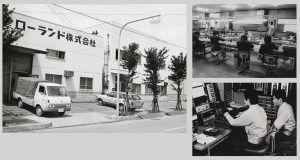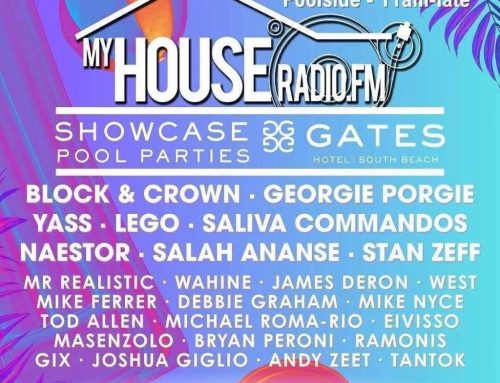
Roland recently celebrated its 50th anniversary. Here, DJ Mag Tech speaks to two Roland users and collaborators — musician Ken Ishii and artist/designer Yuri Suzuki — to reflect on the pioneering company, which was instrumental in crafting the sound of a generation
When Roland released the TB-303, TR-808 and TR-909 back in the early ’80s, little did the company know that it would go on to change the world of electronic music, and that it would be instrumental in crafting the sound of a generation. Fifty years on, and this pioneering brand is still strong in the game, taking its heritage and know-how and continuing to provide instruments that fuel and inspire creativity within the electronic music community.
There are very few companies that can lay claim to being instrumental in creating a whole new genre — acid house — and furthermore, being right there in the mix in the development of hip-hop, techno, house and much more. To think of a world without Roland is to think of a world without dance music as we know it — it is as simple as that. Some of the most well-known and greatest electronic records of our time have been made using Roland gear, and its influence within electronic dance music continues to grow with new releases and products for producers. DJ Mag Tech spoke to two Roland users and collaborators — musician Ken Ishii and artist/designer Yuri Suzuki — about their work and experiences with this famous brand.
Can you recall your first experiences with Roland gear?
Ken: “The very first Roland gear for me was a second-hand S-330, a sampler. I fell in love with a few functions only Roland samplers have, so I never used samplers by any other makers. I used it both for producing and live shows. Then I got the S-760. I guess I had a few of them in the end, like one for home, one for the studio, one for live shows in Japan, and one for Europe. Among many Roland products I have had, the one I loved the most and have most used is the JD-800 synthesiser — again, for producing and live shows. 95% of the synth sounds used on ‘Jelly Tones’ (’95), one of my albums which made me internationally known, were JD-800 sounds, and the rest of the sounds were the S-760. So, I can tell you this album is almost an all-Roland album.
“The period I was playing around the world as a live act, around 1995-2000, the standard set-up on stage was JD-800, S-760 and SE-70 (Boss FX processor). I also did the recording and mixdown of the album ‘Metal Blue America’ (’97) with their first multi-track hard-disk recorder, the VS-880. I used two of them, connecting and syncing them with digital cables.”

What is the significance of Roland’s 50th anniversary for electronic music?
Ken: “This is unquestionably huge. Roland has always been keen on making electronic music a universal thing. They have been pioneering the new territories with their revolutionary gear. There would have been no current electronic music scene without Roland.”
Yuri: “Roland has provided a great entry-point to all people — because of the price, because of the way their equipment can be programmed. It helped a lot of non-musicians to enter the field of making music, such as the significant invention of the step sequencer on the 808, which is absolutely creative and at the same time playful and instant fun to programme music on. Often people talk about the sound, but I would like to note these points.”
What makes a brand like Roland so special that countless producers and artists see them as one of the most influential music tech companies?
Ken: “Their super strong legacy with instruments like the TR-808, TR-909, TB-303 and Juno-106, as well as the continuously released new models, which satisfy music makers’ needs, and are affordable.”
Yuri: “Roland has been creating opportunities for non-musicians to be able to enter the field of electronic music. Also, they have engaged strongly with dance music. That is totally different from other companies, although Roland didn’t purposely go down this direction, it’s a total coincidence.”
Roland50.studio is a great online resource — can you tell us more about it?
Ken: “It’s incredible! Everybody should try it right now! It’s so user-friendly, and you can play and programme it within seconds. And it sounds REAL. I’m really jealous that people can have something like this now, and for free! When I started making music around 1990, those legendary machines like the TR-808, TR-909 and TB-303 already cost a lot of money in the second-hand market. I do love the cute and minimalistic design by Yuri as well. His conceptual sounds and artworks always amaze me.”
Yuri: “It is all based on original Roland instruments, the sound and the way of programming them as well. The aim was to make it as simple as possible to use.”

How did it all come about?
Yuri: “We first collaborated for 808303.studio. I had been involved in an exhibition, Electronic From Kraftwerk To Chemical Brothers at the Design Museum London. They encouraged a public programme to learn based on the exhibition; however, the exhibition happened during the pandemic and we could not engage with the public. Therefore, I approached Roland to create an online platform for people to learn how to make electronic music.
“808303.studio was a huge success — a lot of people engaged with the website. Then Roland asked me if I was interested in taking the website further, and I immediately thought that a series of Roland gear on this platform would be a good idea. As Roland’s iconic instruments have model names of x0x and they always celebrate the date of instruments, such as TR-808 as 8th August, 808 day, I was thinking for the 50th anniversary celebration to do something like a Christmas advent calendar, and slowly reveal the instrument from January to September last year.”
If you had to choose one bit of kit from Roland, what would it be?
Yuri: “That’s a hard question. As I am an acid house enthusiast, I would probably nominate the TB-303, as the instrument created a genre, also a movement, such as the Second Summer of Love in the UK. Quite a charismatic instrument.”
Ken: “Among one of the current models, the MC-707 Groovebox is the one for me. Although I use it only for my live shows at the moment, I can see its potential is tremendous for making music too. You could never guess how many things you can do with it. The operating system has such a layered structure, and it contains so many waveforms, like a standalone synthesiser.
“One of the past models would be the JD-800, as mentioned above. It really expanded my musical possibilities in the mid-’90s. It gave me lots of my trademark sounds. It’s definitely the synthesiser I used for the longest time in my life. I have lots of good touring memories together with it, too.”
What’s next for the online Roland50.studio, will it grow into something bigger?
Yuri: “I have been talking about a new collaboration with Roland, hopefully a hardware collaboration happening soon — watch this space…”
[/fusion_text][/fusion_builder_column][/fusion_builder_row][/fusion_builder_container]





Leave A Comment
You must be logged in to post a comment.